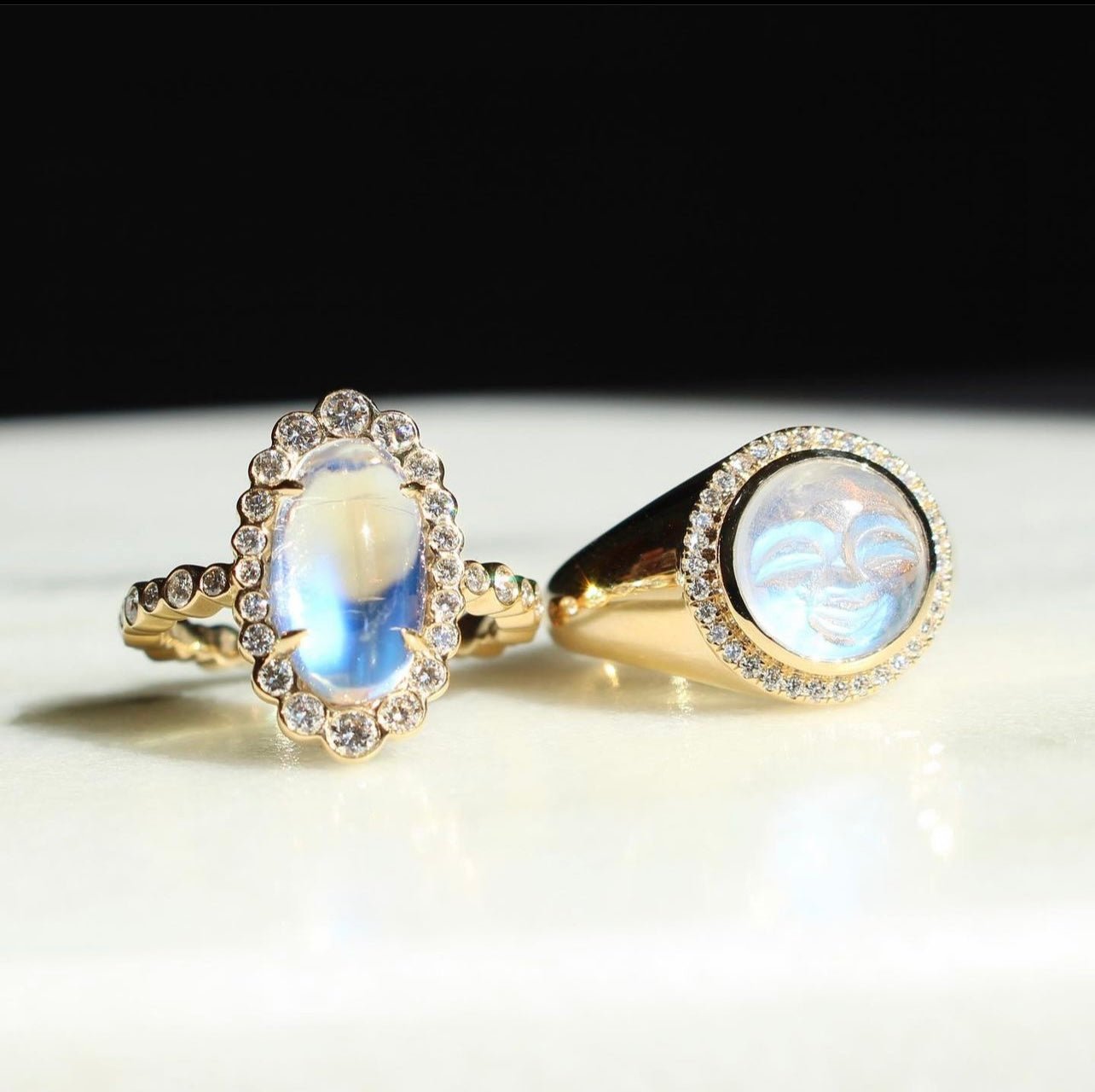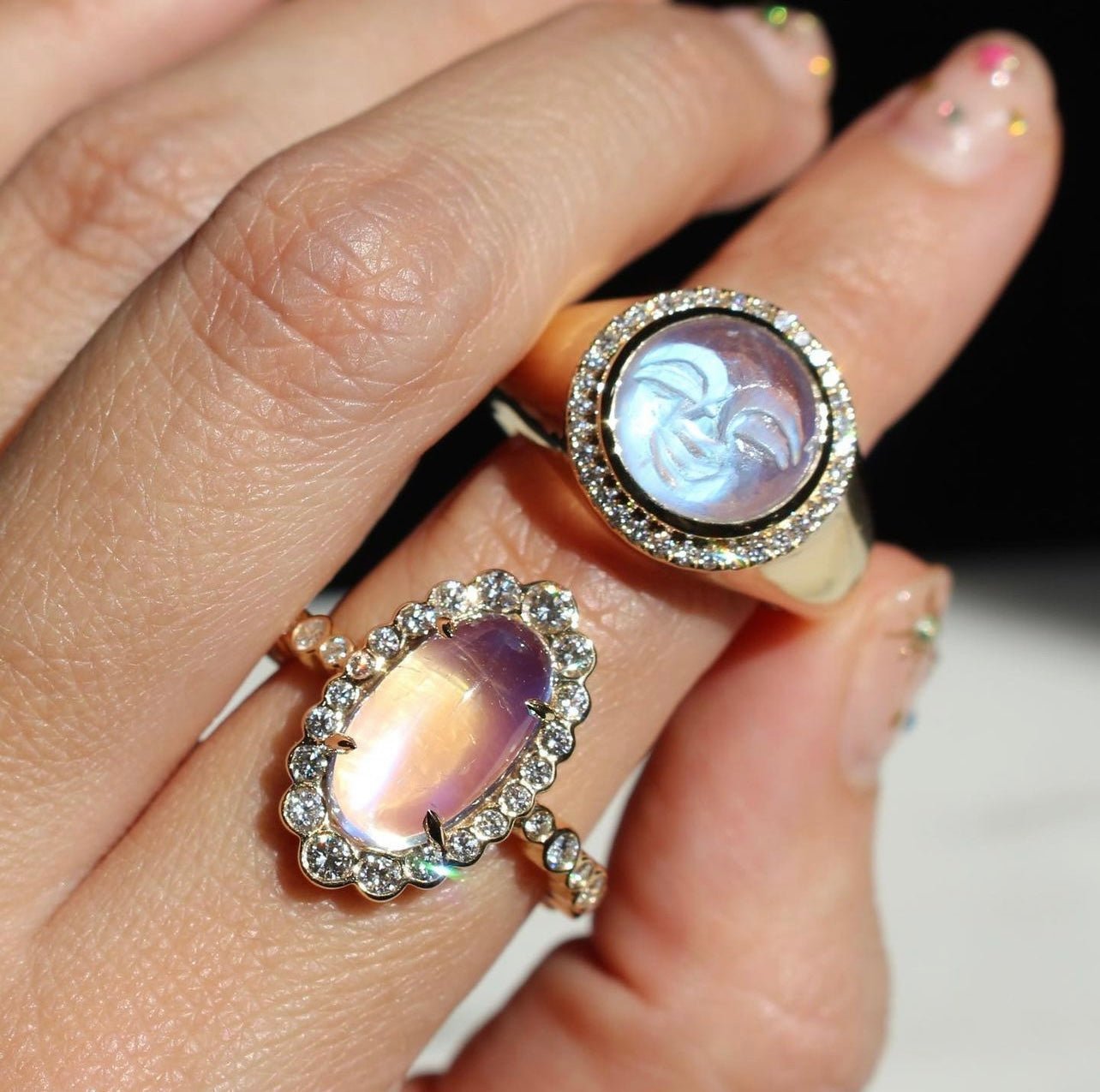It is quite common for fine gems to be classified individually, given their names and identities. Sure, variety is typically there as they serve as an umbrella term—for example, turquoise comes in some very different types, from yellow to robin’s egg blue, with or without matrix, and in alternate densities. When it comes to a family of minerals, the variety can be even more profound, and therefore more interesting for consumers, gemologists, and miners alike.
The chrysoberyl mineral family is likely best known for its stunning alexandrite variety, a gem that produces a color-changing phenomenon based on what lighting it is under. However, chrysoberyl has so much more to offer than just its face value.
Chatoyancy, an incredibly rare effect for alexandrites, is actually a common marker for other types of chrysoberyls. Their wide range of unique colors, many geographic locations, and exceptional durability make this gem perfect for jewelry use.
At Mark Henry Jewelry, we specialize in exotic gem education and artistry. Allow us to introduce you to the fascinating family of chrysoberyl minerals, their properties, and their purposes.
Where Did Chrysoberyl Originate?
First discovered in the late 1700s, chrysoberyl has had quite the evolution. With alexandrite being found in the 1830s and gaining popularity throughout subsequent centuries, the mineral family has never seemed to slow down in demand.
Chrysoberyl’s name is derived from the Greek word for golden (chrysos) and beryllos, a stone that closely mimics the mineral’s yellow and green shades. These yellow-green chrysoberyls were formerly referred to as chrysolite in the 19th century. They shared a name with peridot for many reasons, one being their common beryllium-including composition. Experts have labeled chrysoberyl and peridot as entirely separate gems, however. Peridot does not rest in the chrysoberyl mineral family.
Location, Location
Chrysoberyl has been found and mined in Australia, Myanmar, India, the United States, Brazil, the Democratic Republic of Congo, Sri Lanka, Finland, Japan, Madagascar, and Tanzania.
Cohesive Properties
Chrysoberyl is composed of beryllium and aluminum oxide, chemically written as BeAl2O4. There is often some confusion about if the mineral is actually beryl, but it differentiates due to its lack of silicate.
It is utilized as a gemstone, primarily in jewelry, because it does not form in deposits at an adequate size for beryllium ore. It can only form when lots of beryllium is available, though, which can be a rare occurrence—this is why chrysoberyl is considered native to specific regions and difficult to find elsewhere.
It is understood to be incredibly resistant to weathering, often outlasting other minerals in sediment deposits when abrasion and chemicals are at play. They are found in pegmatites, mica schists, and dolomitic marbles, gneiss, and stream pebbles.
Here are some of the most common properties of this mineral family:
- Streak: Present and colorless.
- Cleavage: Prismatic but weak.
- Crystal system: Orthorhombic.
- Refractive Index: from 1.740 to 1.777.
- Cleavage: Rare but can be seen. When it occurs, it does so in one direction.
- Luminescence: Present and fluorescent in Short Wave light.
- Light transmission: Anywhere from transparent to opaque.
- Specific Gravity: Ranges from 3.7 to 3.8.
- Luster: Vitreous.
Chrysoberyls have a hardness of 8.5 on the Mohs scale, making them incredibly durable and prime gems for jewelry use, as mentioned before. Dust is known to fall at a 7 on the Mohs scale. This makes chrysoberyls versatile. They can be safely placed in rings and endure the potential scratching or wear and tear of everyday chores like housekeeping. This is essential for wearability and increases value.
In terms of color, chrysoberyls tend to be yellow, yellow-green, or green. They can also, less commonly, come in brown tones. Those that are deemed of the best quality have a deeply rich color and transparency. Australian chrysoberyl tends to be yellow-green, and pieces from Myanmar can be colorless.
Phenomena
Chrysoberyls are famous for their chatoyancy, the “cat-eye” effect that can raise the price and marketability of a gem. The effect is created when parallel fiber inclusions are paired with a light line from the dome of a cabochon-cut chrysoberyl that reflects towards them at a right angle.
There are often two colors, one on either side of the “iris” in the middle of the “eye,” and one side is traditionally creamy looking with a milky-glaze while the other more resembles the texture of honey.
A chrysoberyl with this phenomenon can be referred to as a cymophane. This sets it apart from other members of the mineral family. The best cat-eye chrysoberyl hails from Brazil, Sri Lanka, and India.
- Pro tip: if you happen to come across a chatoyancy chrysoberyl, tilt it back and forth. Some have the effect of the eye opening and closing depending on what angle they are viewed from!
It is not beneficial to add chatoyancy to chrysoberyls that do not already present with the effect, as it can decrease quality overall and take away from the rawness of the material. Sometimes dye, oil, and radiation treatment can be given to these gems to bring out their color.
Alexandrite
The most valuable and popular member of the chrysoberyl family is alexandrite. Known for its origins in the Ural Mountains of Russia over 200 years ago and named for Czar of Russia Alexander II in 1834, this gem is stunning in its color change. Under daylight, alexandrite boasts a beautiful and rich green that almost resembles an emerald. But by nightfall and under incandescent lighting, it swaps this shade for a ravishing red.
The phenomenon is all in credit to chromium contents in the gem, which are in place of chrysoberyl’s traditional aluminum present. It falls along most of the properties of other chrysoberyls and is most valuable when it has a high percentage of color change and has strong color saturation. All other factors, like being “eye clean” or whether or not it is translucent and has inclusions, are secondary to its quality of color change and therefore do little to impact price.
After the majority of the Russian alexandrite supply was mined by the end of the 1800s, luck struck in the 1980s throughout East Africa and Sri Lanka. Most notably, in 1987, a supply of very fine alexandrite was found in Brazil with amazing color change and brilliant green and red saturation.
It quickly became prized, and we are so proud to have our entire Mark Henry Jewelry collection of alexandrite from this region. We have worked with the same family-run and ethically-sourced mine in Brazil since 2004. Through this relationship, we are able to guarantee that all of our alexandrite offerings are of the utmost quality and value.
Symbolism and Uses
Gems in the chrysoberyl mineral family have many meanings in spiritual, healing, and astrological circles. For those born in June, chrysoberyl is their birthstone and gives an innate sense of protection when worn.
The cat’s eye phenomena naturally inspires lots of folklore, regarded as a talisman for some— especially when it has the effect of blinking. Since chrysoberyl comes in yellow tones, it can be considered representative of wealth or status due to a close resemblance to gold.
It is also believed to preserve self-discipline as well as positivity, fixing the wearer from the inside out and projecting a lighter attitude with less negativity. It is said to dispel negative thoughts.
There is an idea that chrysoberyl can bring about tolerance and harmony, a great sign for those hoping to gift this precious gem. Why not share it with a lover or friend with whom your relationship needs some repair?
Synthetic Substitutes
Just like with any other gem, chrysoberyls do have their fair share of synthetic and imitation pieces. Synthetic alexandrite is considered identical to natural alexandrite in chemical and physical properties, as well as grown in mirrored conditions. For this reason, it can be labeled as real alexandrite and racks up a hefty price, just like a mined stone.
For other members of the chrysoberyl family, synthetics have different standards and may not be as authentic. Chrysoberyl with chatoyancy has been made synthetically since the 1970s and was brought to the commercial sector in the 1980s. It lacks inclusions that are common in real chrysoberyl. However, it showcases needle inclusions along with a weak yellow fluorescence when placed underneath a Short Wave ultraviolet light.
Cherished Chrysoberyl
The value of chrysoberyl certainly does vary depending on inclusions or type, but there is no question of its excellence across the board. That is why it is so important to take excellent care of these gems, as they can be sensitive to particularly tough bashes and very extreme heat. Our advice is to wash them with warm water and a little bit of soap and scrub lightly with a brush when it comes time for cleaning, although mechanical methods are allowed.
With so much to offer from the chrysoberyl mineral family, there is a little bit for everyone. With gems ranging from dazzling yellow to the reddest of reds within alexandrite, the possibilities for jewelry combinations are also endless as well. Personally, we love to highlight the alexandrite in our pieces by itself most of the time. Regardless, chrysoberyl jewelry is always exceptional.
Sources:
Chrysoberyl: a gem mineral known as cat's-eye and alexandrite | Geology
Chrysoberyl Value, Price, and Jewelry Information | Gem Society



Shop for the best quality gemstones online at best price. Choose from a wide selection of loose gemstones for sale and get the best deals & Offers.
best quality gemstones online